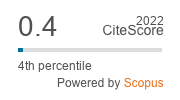Effect of photoperiod on the DNA, RNA and protein concentration in the silkgland of tasar silkworm, Antheraea mylitta (D) (Lepidoptera, Saturniidae)
DOI:
https://doi.org/10.33307/entomon.v49i2.1174Abstract
In Antheraea mylitta (D) (Lepidoptera, Saturniidae), the effect of photoperiod on total DNA, RNA, and protein concentration in the middle silk gland (MSG) and posterior silk gland (PSG) was studied. The photoperiod caused enhancement in the secretory activity and stimulates the sericogenesis process in MSG and PSG. The total nucleic acids and protein concentration of MSG and PSG under 24L:00D condition reached maximum level and then it decreased. Maximum nucleic acids and protein concentration were observed during long-day period and the minimum during short-day period. The photoperiod activated or inhibited the biological clock which acted upon the respective endocrine glands accordingly and control the process of sericogenesis. The larvae underwent significant changes with high DNA, RNA and protein concentration under 24L:00D, which is highly suitable for the silk protein synthesis.
Downloads
Published
How to Cite
Issue
Section
License
Copyright (c) 2024 Association for Advancement of Entomology

This work is licensed under a Creative Commons Attribution-ShareAlike 4.0 International License.


